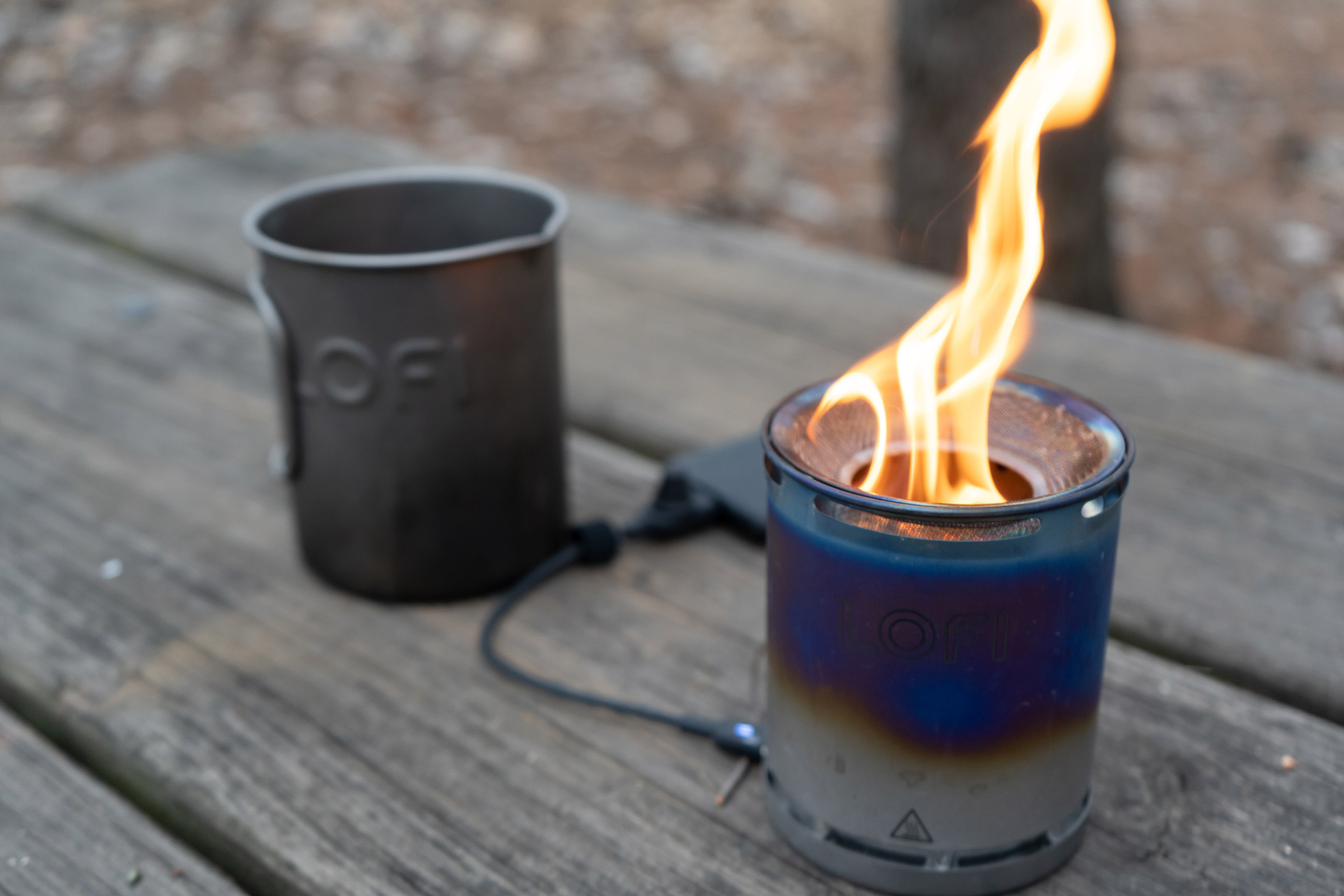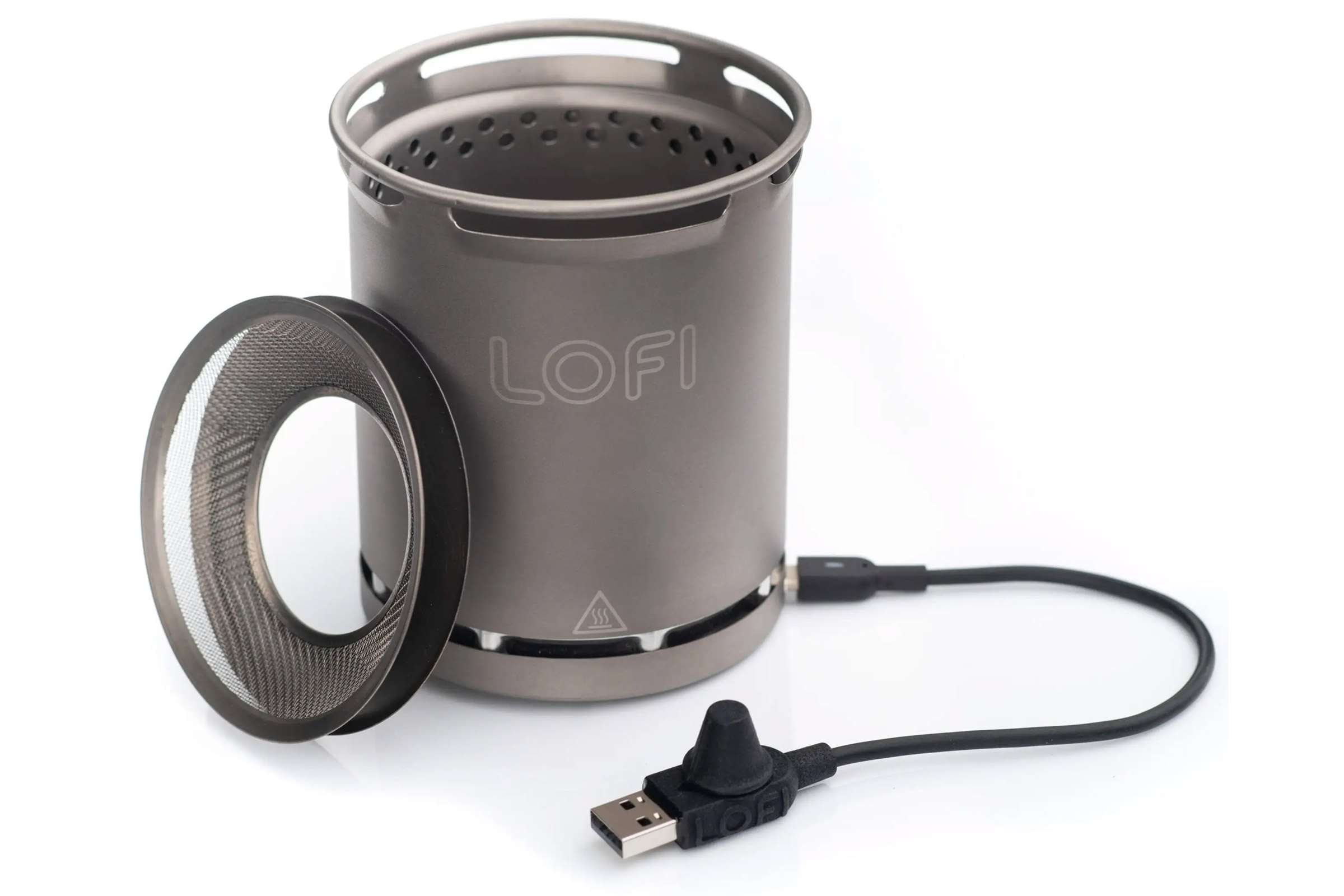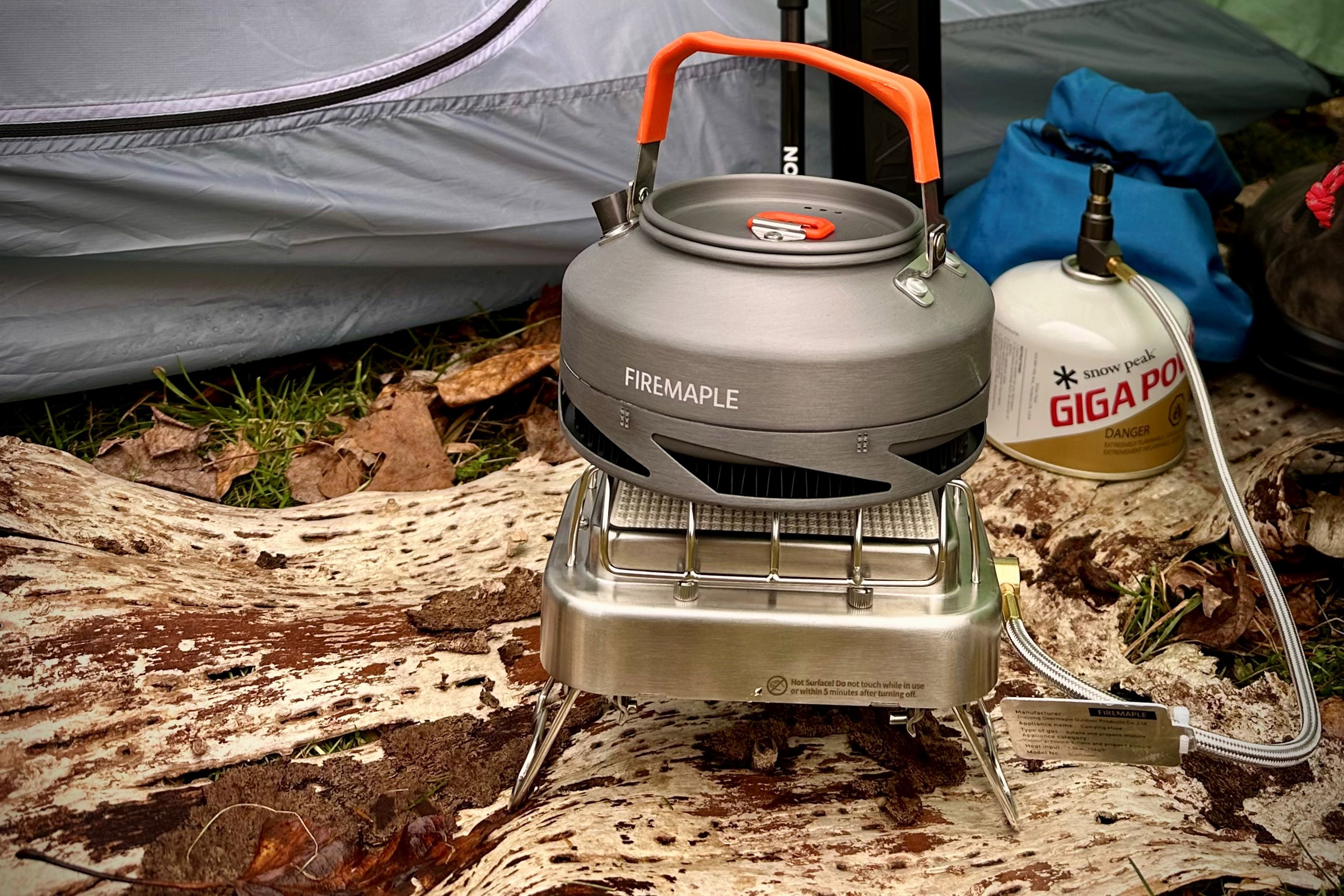My journey with fire probably mirrors most outdoor recreationists. Since my outdoor adventures were inspired by a childhood’s worth of Survivorman episodes, I was bushcraft-oriented from the jump. Camping just wasn’t true camping without a fire.
Then the miles between camps got longer. I spent fewer hours at camp and more time on the things between. I went from open-fire cooking, to ever smaller and lighter stoves. Isobutane took wood’s place.
Then I spied an innovative little invention on Kickstarter — the ultralight inverse of a BioLite: the LOFI stove. It didn’t use an integrated (heavy) battery to power a fan and charge electronics. Instead, it relies on an external power source to ram air through a clean-burning wood gasifier stove. And, it weighs under 5 ounces.
I spent a year watching the LOFI’s crowdfunding campaign, but it only took one night for me to make it my main stove.
In short: The LOFI stove is a wood stove fit for the long haul. In an age when few people hit the trail without some kind of power bank, this wildly efficient stove can get 1-2 dozen times as much cook time with even the smallest battery banks. Is it techy? Oh, yes. Is it pricey? Yup. But boasting more fun, less weight, and longer burn times, the LOFI is a bonafide ultralight wood stove. That also raises some interesting questions about the pluses and downsides of a non-canister stove.
- Construction: Titanium body, steel fan
- Weight: 4.88 oz. total (with ember guard and power cable)
- Stove dimensions: 4.25” tall, 3.38” diameter
- Burn chamber: 3.5 x 3.38”
- Stove type: Fan-fed wood gasifier
- Run time: 21-22 hours on high, with 5,000 mAh battery
- Boil time: 4-10 minutes for 500 mL
Pros
- Ultralight
- Few sparks
- Little smoke
- Safe-to-handle base and quick-cooling sides
- Can use with almost any power bank
- Environmentally and LNT-friendly
Cons
- Works best with a proprietary power cord
- Requires a power bank
- Works best with extra accessories
- Performance dependent on the wood
LOFI Wood Stove Review
Design, Specs, and Weight
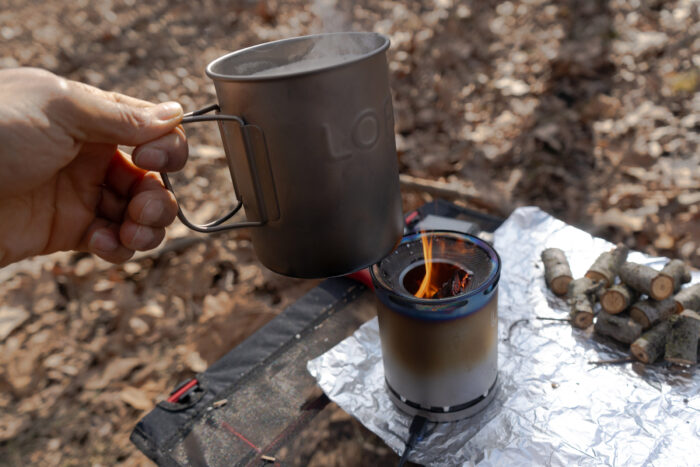
At 4.25 inches in height and 3.4 inches in diameter, the LOFI isn’t much larger than the average 450mL cup. Even so, a double-walled wood stove, complete with cable and ember guard coming in under 5 ounces is impressive. How impressive depends on what you’re comparing it to, and what you consider part of its kit.
The LOFI comes with a power cable (which has a fan speed control switch) and an ember guard against stray sparks. It also requires a power source. LOFI’s recommended 5,200 mAh power bank is another 4.2 ounces. Opting for my usual Otterbox 5,000 mAh battery saved me a third of an ounce.
And realistically you’ll need something for cutting wood. Yet, with only a 1.75-inch feed hole in the ember guard, I preferred LOFI’s ratcheting snips (optional) over a blade to process wood, in part because they made it so easy. With the snips, I was able to cut enough branches in under 5 minutes to keep a fire going for half an hour, into easy-feeding inch-by-inch chunks.
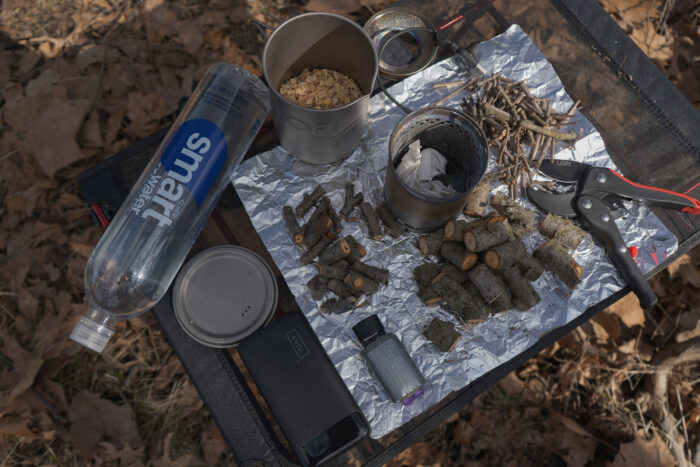
That was another 4.5 ounces — offsettable ounces. I routinely found myself carrying a smaller knife, on account of having the shears. But this was accompanied by more gray weight: an ounce or two of firestarters for wetter days.
By the time I got done, my personal LOFI kit weighed in at around 15 ounces. Held against a 2-pound BioLite (that’s without a pot), that’s incredible. While the latter would typically only work for car camping, the LOFI, over a pound lighter with all accessories included, is a realistic trail choice.
Compare it against isobutane stoves and things get complicated. Four ounces of isobutane, including the canister and the average stove, will give you 1.5-3 hours of burn time for around 8.5-11.5 ounces. Bump up to 8 ounces of gas, for longer trips or actual cooking, and you’d get twice the burn time for 14-17 ounces.
Compared to the lightest 4-ounce isobutane setups, the LOFI is a touch heavy. Against an 8-ounce canister, even accounting for all my accessories, the LOFI stove still gave me three to four times the cooking time for comparable weight. And in my book, 21-22 hours of fire with even the smallest 5,000mAh power banks is absolutely ultralight.
Testing the LOFI Stove
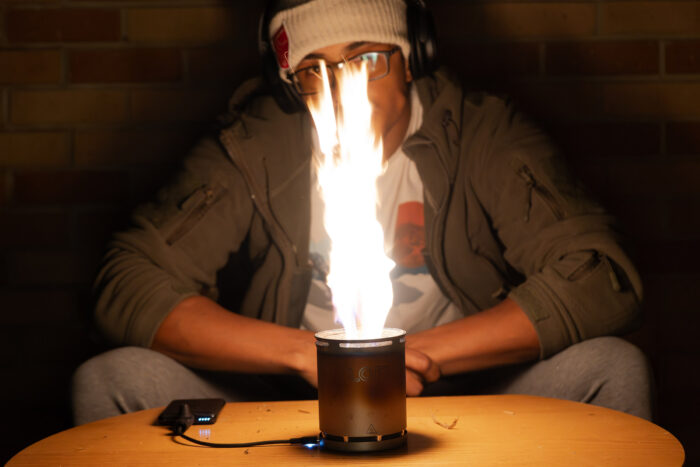
I cannot remember the last time I had this much fun with a stove. That being said, as great and efficient as it is once it’s roaring, it’s not perfect.
Every time I lit the LOFI, I removed the ember guard. Getting a fire going through a 3.25-inch opening is a lot easier than getting it lit through the 1.75-inch opening.
There were two things I didn’t expect. The first was how much easier it was to process wood with LOFI’s ratcheting snips or a multitool’s pliers, than a knife. The wood in the photo above took me maybe 5 minutes to gather and process and was enough for 30 minutes of cooking time.
However, that was on a good day with relatively dry wood, where I only had to chuck in 2-5 inch-by-inch chunks of wood every several minutes. On wet days, with softwood, things got more involved. With pinewood, lighting a fire was a smokier and sparkier affair. Then, I found myself using nearly twice as much wood, and feeding it more frequently.
In addition to the accessories like LOFI’s power bank and wood snippers, LOFI sells its own cookpots (like this new one from its latest — and fully funded — second Kickstarter campaign).
LOFI Stove: Fun With Fire at Camp
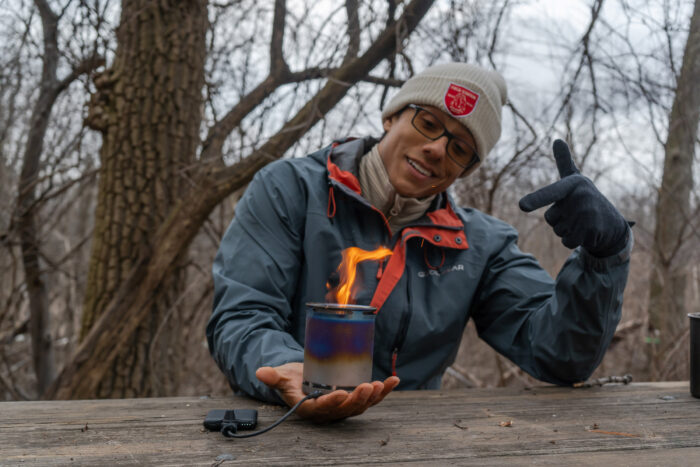
Cooking with this stove was also a joy. The LOFI’s mouth is narrow enough to efficiently heat 500-1,000mL vessels (I tested it with a variety). On high, I routinely found that I was able to boil 2 cups of water in a little under 4 minutes, once the fire was roaring.
Importantly: it’s also wide enough to fry with most camping skillets. When topped with cookware, sparks from the LOFI are practically nonexistent. However, when lighting a fire or letting it burn uncovered, the fan was plenty capable of kicking out small sparks.
Fortunately, its bottom stays cool to the touch, even on full blast. With a piece of folded foil or a metal screen to protect from the occasional sparks that escaped when topping it off, I could prep and cook whole meals on top of my usual mesh Naturehike table. Another thing I didn’t expect: A nearly smokeless flame shooting out of a burning stove had a base cool enough for me to hold in my hand.
After testing, I decided the LOFI didn’t measure up to the ease of a white gas stove. It also left some residue on my cookware, though less than other wood stoves. (Titanium pans especially still had a prominent hot spot.)
Nevertheless, cooking full-on, multipot meals was far easier with this than with isobutane, with none of the fuel anxiety. One day, I even used the stove to fry catfish for tacos on the balcony at home — convenient, easy to use, and I didn’t have to stink up my kitchen.
Variables, Cons, and Price
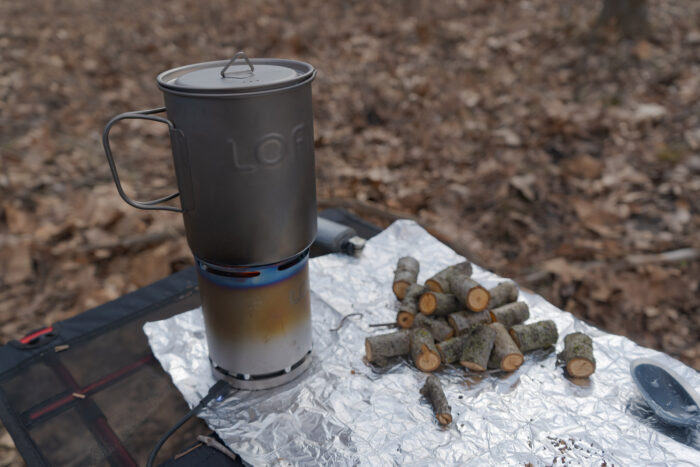
Lighting the stove was the hardest part. A power-controlled fan makes fires efficient, but it’s no substitute for firestarting skills. Fortunately, good firestarters and/or a of splash lighter fluid are. So, even the clumsiest cooks in wet places shouldn’t have too many problems.
Drying out damp gear, a wood stove staple activity for me, was more difficult on the LOFI. Even after burning for 30 minutes, I had two to three thimblefuls of ashes. However, it consumes fast, radiates little, and has a propensity to produce 6-12-inch flames, even on low. For this purpose, the LOFI isn’t as good as traditional wood burners.
Finally, I’m always one to forget to take isobutane canisters out of my bags when I head to the airport. But for all the people who fly and travel for backpacking trips, the LOFI means no risk of forgetting to yoink a gas can out of your bags.
It also means not getting price-gouged on isobutane at a remote near-trail lodge or outfitter last minute. Or, running the risk of your destination not having gas in stock. This is definitely a pro for this stove.
But, at $196, you’d have to get gouged on quite a bit of gas canisters for the LOFI to come out ahead price-wise. Factoring in the cost of the average stove, you’d have to run through around 20-30 8-ounce isobutane canisters before the LOFI wins on price. Held against white gas and alcohol stoves, the LOFI has an even harder time making the return on investment for anyone but the most dedicated and frequent backpackers.
A Note on Leave No Trace
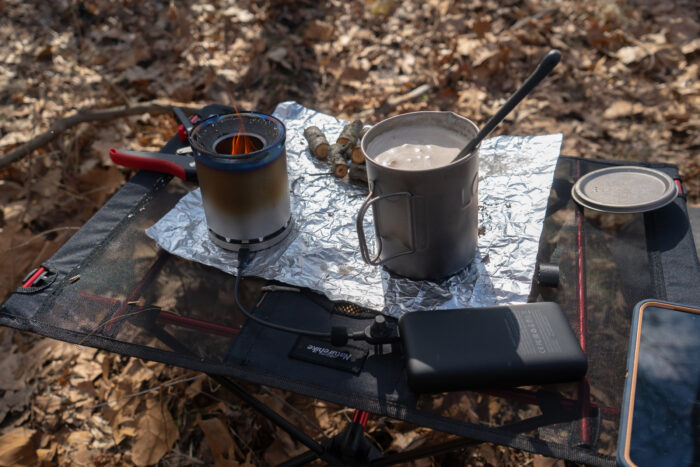
Leave No Trace isn’t black and white. It’s a set of principles, not hard and fast rules. Case in point: Every gas stove burns cleaner than a wood one, and means harvesting the least from the environment. But that’s not eliminating environmental impacts — it’s offsetting it.
White gas, propane, alcohol, and isobutane — they all have to be processed and shipped. Leave No Trace principle No. 5 says “Minimize Campfire Impacts,” not eliminate. Between the LOFI and gas, it’s a choice between a tiny local impact, and a larger, but more distributed one.
However, the impact and practicality of a wood stove aren’t the same everywhere. In deserts with minimal brush, grasslands with few trees, or rainy-season softwood forests, the LOFI wouldn’t be my first choice. Between that and in any place frequently under burn bans, it’d be a no-go. Outside of that, especially at elevations where gas gets less efficient — I can confidently say that the LOFI is my new go-to.
Easterners, Midwesterners, and Southerners: say hello to your new favorite toy. Western fire country residents, be wary of where and when you’d be able to use this stove.
LOFI Stove: High Marks, Final Verdict
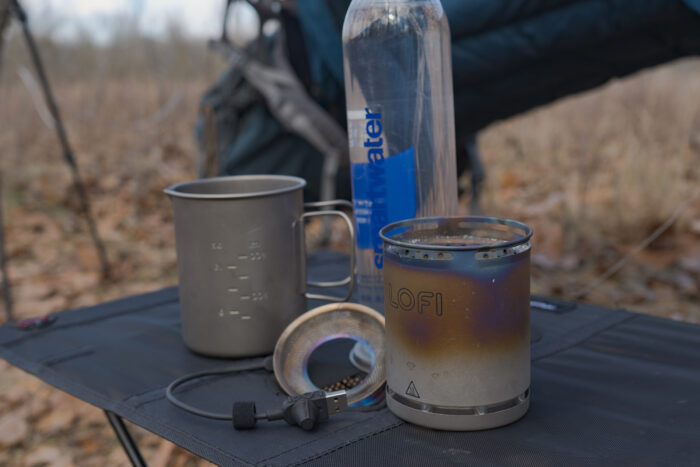
I have a pretty extensive collection of stoves. Since I started using the LOFI, not one of them has seen the light of day. The LoFi is efficient, low-maintenance, and offers leagues more burn time for less weight than any other stove on the market. At its most minimalistic, you can hike for months on end and still cook every meal for only 5 ounces of weight.
That being said, the LOFI is not immune to the same effects that temperature and elevation have on gas stoves. Though on the whole, it likely impacts the environment less — no more canisters. However, it’s pricey up front. And in the further extremes of wet and dry country, it’s less efficient.
Still, I can’t remember the last time I had this much fun with fire. In a few months, I’ll be moving from the Midwest to a Nevada tinderbox. Anywhere I can feasibly opt for the high-tech over canister stoves, I’m going to. After over a decade of moving away from wood, I’m back. Come on, LOFI. Light my fire.
